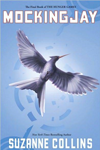
Search
Categories
Famous Authors
Top Selling Books

Book Home ![]() Books Information
Books Information ![]() The Hitchhiker's Guide
The Hitchhiker's Guide
The Hitchhiker's Guide
The Hitchhiker's Guide to the Galaxy is a science fiction series written by Douglas Adams (1952–2001). It originated in 1978 as a radio comedy broadcast on BBC Radio 4. Since then it has been adapted to other media, including stage shows, a series of five books first published between 1979 and 1992, (the first of which was titled The Hitchhiker's Guide to the Galaxy), a 1981 TV series, a 1984 computer game, and three series of three part comic book adaptations of the first three novels, published by DC Comics between 1993 and 1996. There have also been a series of towels that are considered by some to be canonical, as they include text from the first novel [1]. A Hollywood-funded film version, produced and filmed in the UK, was released in April 2005, and adaptations of the last three books to radio were broadcast from 2004 to 2005. Many of these adaptations, including the novels, the TV series, the computer game and the earliest drafts of the Hollywood film's screenplay, were all done by Adams himself, and some of the stage shows debuted new material written by Adams. |
The title The Hitchhiker's Guide to the Galaxy is often abbreviated as "HHG", "HHGG", "HHGTTG", "HG2G", or "H2G2". The series is also often referred as "The Hitchhiker's Guide", or simply "The Guide". This title can refer to the several incarnations of the story, of which the books, having been translated into over 30 languages by 2005 [5], are the most widely distributed. The title can also refer to the fictional guidebook The Hitchhiker's Guide to the Galaxy, an eccentric electronic encyclopedia which features in the series. Last but not least, h2g2, launched as the "Earth Edition" of the Guide, is a website hosted by the BBC featuring a range of user-submitted articles.
Although the various versions follow the same basic plot, they are in many places mutually contradictory, as Adams rewrote the story substantially for each new adaptation. In all versions, the series follows the adventures of Arthur Dent, a hapless Englishman who escapes the destruction of Earth by an alien race called the Vogons with his friend Ford Prefect, an alien from a small planet somewhere in the vicinity of Betelgeuse and researcher for the eponymous guide. Zaphod Beeblebrox, Ford's semi-cousin and part-time Galactic President, unknowingly saves the pair from certain death. He brings them aboard his stolen spaceship, the Heart of Gold, whose crew rounds out the main cast of characters: Marvin the Paranoid Android (a severely depressed robot), and Trillian, a woman known by Arthur as the only other surviving human being. After this, the characters get involved in a quest to find legendary planet of Magrathea and the Question to the Ultimate Answer.
The Hitchhiker's Guide to the Galaxy
In The Hitchhiker's Guide to the Galaxy (published in 1979), the characters
visit the legendary planet Magrathea, home to the now-collapsed planet
building industry, and meet Slartibartfast, a planetary architect
who was responsible for the fjords of Norway. He relates the story
of a race of hyper-intelligent pan-dimensional beings who built a
computer named Deep Thought to calculate the answer to the Ultimate
Question of Life, the Universe, and Everything. When the answer was
revealed as 42, they were forced to build a more powerful computer
to work out what the Ultimate Question actually was, but their plans
never come to fruition. (Later on, referencing this, Adams would create
a puzzle which could be approached in multiple ways, all yielding
the answer 42.)
The computer, often mistaken for a planet (because of its size and use of biological components), was the Earth, and was destroyed five minutes before the conclusion of its 10-million-year program. The hyper-intelligent pan-dimensional beings, who turn out to be mice, want to dissect Arthur's brain to help reconstruct the question, but our protagonists escape, setting course for "The Restaurant at the End of the Universe."
The book was adapted from the first four radio episodes. It was first published in 1979, initially in paperback, by Pan Books, after BBC Publishing had turned down the offer of publishing a novelisation, an action they would later regret [3]. The book reached number one on the book charts in only its second week, and sold over 250,000 copies within three months of its release. A hardback edition was published by Harmony Books, a division of Random House in the United States in October 1980, and the 1981 US paperback edition was promoted by the give-away of 3,000 free copies in the magazine Rolling Stone to build word of mouth.